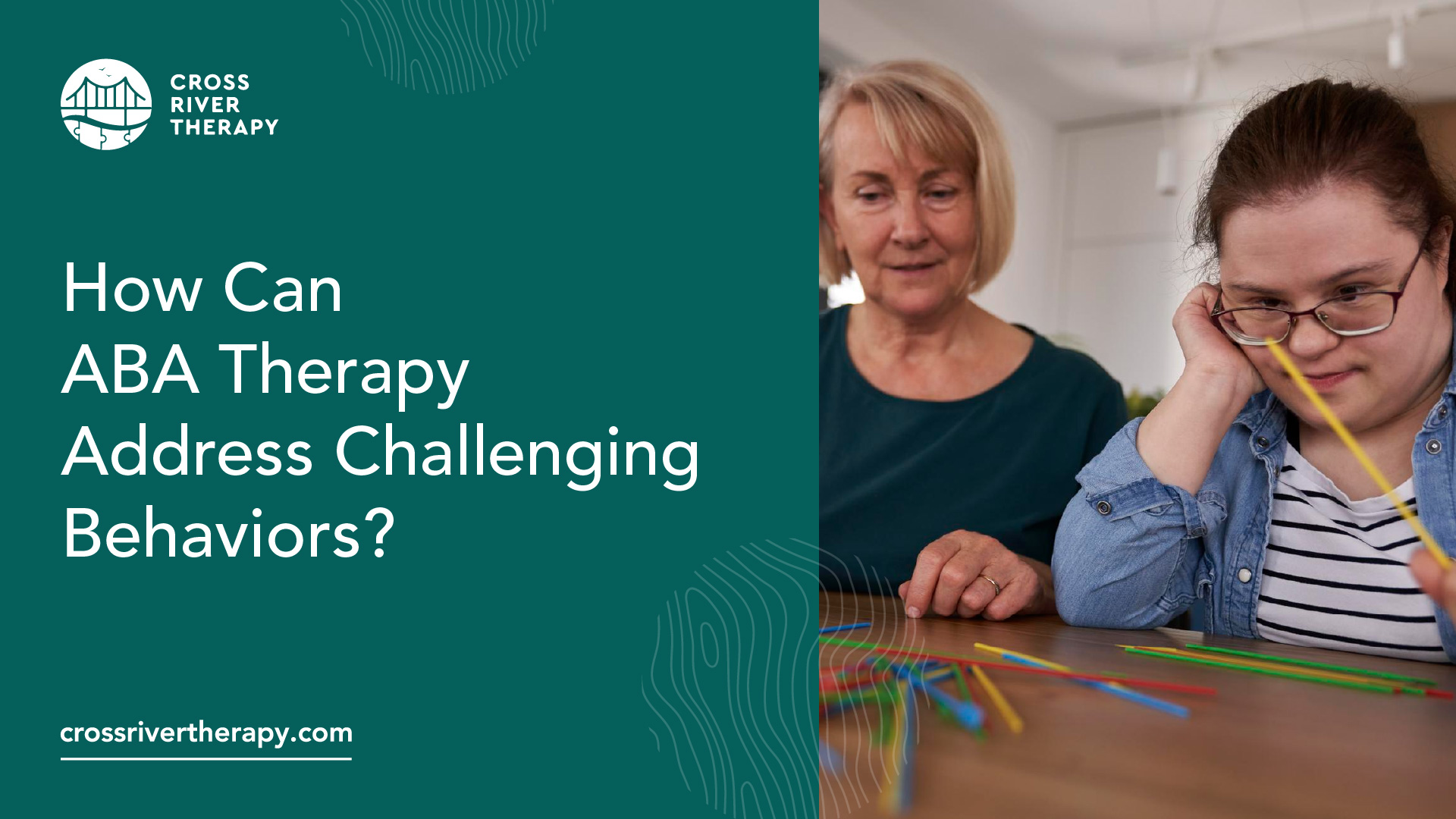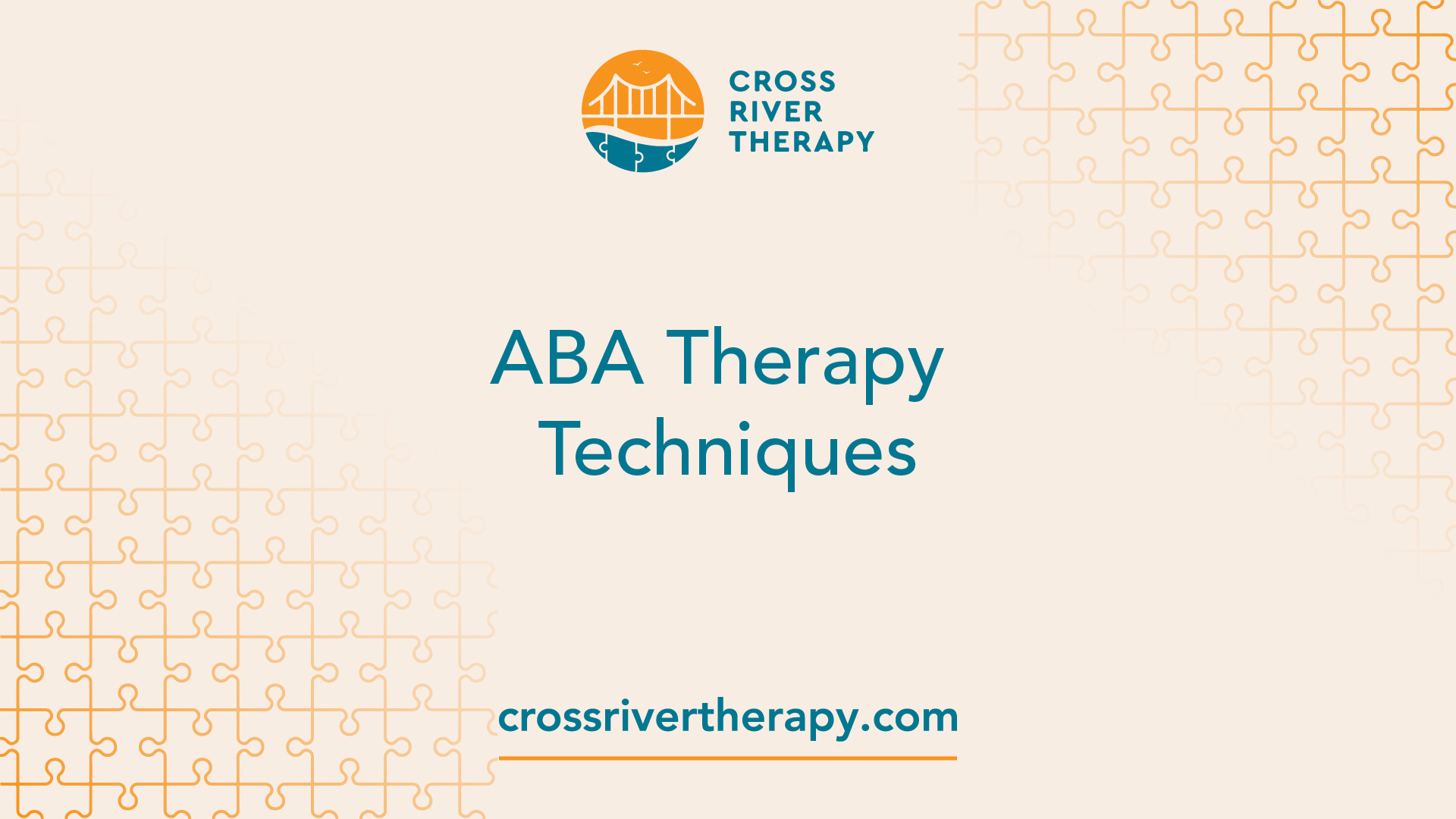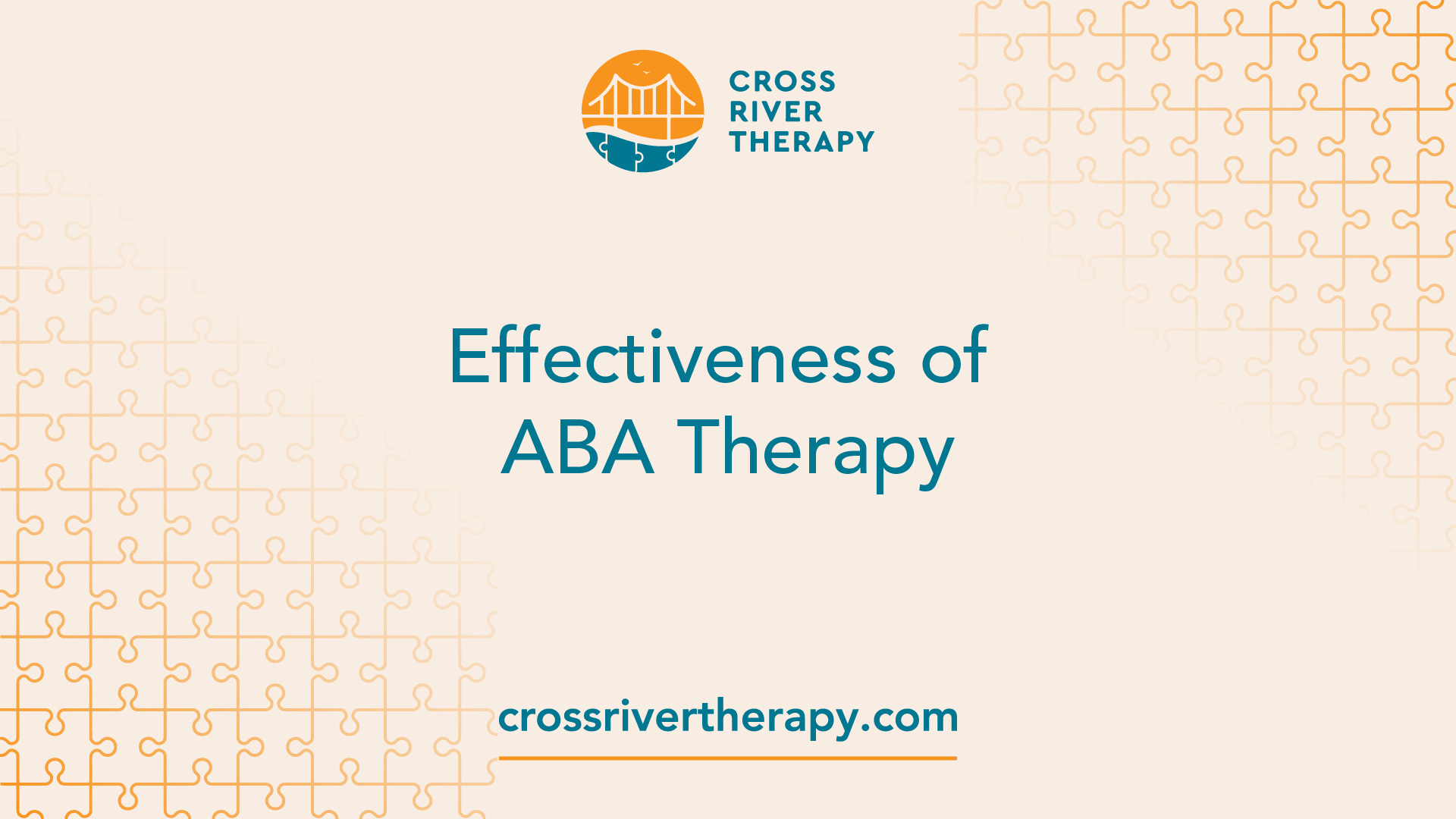How Can ABA Therapy Address Challenging Behaviors?
Discover how ABA therapy helps address challenging behaviors in children with autism.

Understanding ABA Therapy
ABA therapy, short for Applied Behavior Analysis therapy, has been widely used to help children with autism and related developmental disorders since the 1960s. It is considered an evidence-based best practice treatment by the US Surgeon General and the American Psychological Association, demonstrating its effectiveness, quality, and usefulness.
Basics of ABA Therapy
ABA therapy is rooted in the principles of learning theory and behavior analysis. It aims to understand and modify human behavior by increasing desired behaviors and decreasing problematic ones. This therapy is particularly beneficial for children with autism as it helps teach new skills, improve social interactions, and reduce challenging behaviors.
One of the key strategies used in ABA therapy is positive reinforcement. This involves providing rewards or incentives to encourage positive behavior change over time. By associating a behavior with something valued, individuals are more likely to repeat that behavior in the future.
To ensure the effectiveness and customization of ABA therapy, a board-certified behavior analyst (BCBA) designs and directly oversees the therapy programs. By tailoring the therapy to each individual's skills, needs, interests, preferences, and family situation, BCBA ensures that the therapy is personalized and maximizes progress.
Evolution of ABA Therapy
Over the years, ABA therapy has evolved and expanded its applications beyond autism. It has been successfully utilized to address various behavioral challenges and developmental disorders. ABA therapy strives to improve the quality of life for individuals by promoting independence, enhancing communication skills, fostering social interactions, and facilitating adaptive behaviors.
By utilizing evidence-based practices, ABA therapy continues to refine and adapt its techniques to meet the specific needs of individuals. Success stories and studies highlight the positive impact of ABA therapy in achieving meaningful behavior change and improving overall functioning [2].
Understanding the basics and evolution of ABA therapy sets the foundation for exploring the benefits, techniques, and effectiveness of this approach in addressing challenging behaviors. ABA therapy empowers individuals with autism and related developmental disorders to reach their full potential and lead fulfilling lives.
Benefits of ABA Therapy
ABA therapy, or Applied Behavior Analysis therapy, offers numerous benefits for individuals with autism spectrum disorder (ASD) by addressing challenging behaviors and enhancing life skills. Let's explore these benefits in more detail.
Improving Challenging Behaviors
ABA therapy utilizes various strategies, such as attention, reinforcement, patient teaching, and effective training, to manage challenging behaviors in children with autism. One of the primary techniques employed in ABA therapy is positive reinforcement, where individuals are more likely to repeat a behavior if it is followed by something valued, such as a reward. This approach encourages positive behavior change over time.
By implementing ABA therapy techniques, individuals with autism can learn alternative behaviors and develop appropriate responses to different situations. Through the analysis of behavior patterns and the application of evidence-based interventions, ABA therapy helps individuals reduce problem behaviors and replace them with more socially acceptable actions. This can lead to significant improvements in daily functioning and overall quality of life.
Enhancing Life Skills
In addition to addressing challenging behaviors, ABA therapy focuses on enhancing life skills for individuals with autism. ABA programs can be tailored to meet the specific needs of each individual, allowing for targeted skill development [4]. Through individualized programs, individuals with autism receive systematic instruction and practice in areas such as communication, social interactions, self-care, academic skills, and more.
ABA therapy emphasizes breaking down complex skills into smaller, manageable steps, known as task analysis. This approach enables individuals to learn and master each step before progressing to the next, promoting success and building confidence along the way. By focusing on skill acquisition and generalization, ABA therapy helps individuals with autism develop the necessary abilities to navigate daily life effectively.
The benefits of ABA therapy extend beyond the therapy setting, as the skills acquired through ABA programs can have a lasting impact on an individual's independence, social interactions, and overall well-being. By targeting challenging behaviors and enhancing life skills, ABA therapy offers individuals with autism the opportunity to thrive and reach their full potential.
ABA Therapy Techniques

ABA therapy utilizes various techniques to address challenging behaviors in individuals with autism. Two key strategies commonly employed in ABA therapy are positive reinforcement strategies and individualized programs.
Positive Reinforcement Strategies
Positive reinforcement plays a crucial role in ABA therapy for managing challenging behaviors. This strategy involves providing rewards or incentives to increase the likelihood of desired behaviors being repeated. By associating positive consequences with specific behaviors, individuals with autism are motivated to engage in those behaviors more frequently.
In ABA therapy, positive reinforcement can take many forms, such as verbal praise, tokens, or tangible rewards. The specific type of reinforcement used is tailored to the individual's preferences and can be adjusted based on their progress and needs. For example, a child may receive a sticker or a small toy as a reward for completing a task or demonstrating appropriate behavior.
The goal of positive reinforcement is to promote positive behavior change over time. By consistently reinforcing desired behaviors, individuals with autism can learn and generalize these behaviors to different settings and situations. This helps them develop the necessary skills to navigate social interactions and daily life effectively.
Individualized Programs
One of the strengths of ABA therapy is its focus on individualization. ABA programs are designed by board-certified behavior analysts (BCBAs) who tailor interventions to meet the specific needs of each individual. These programs are carefully crafted to target specific challenging behaviors and to enhance the development of necessary life skills.
Individualized programs in ABA therapy involve conducting a thorough assessment of the individual's strengths, challenges, preferences, and goals. Based on this assessment, the BCBA develops a comprehensive treatment plan that outlines specific objectives, targets, and strategies to address the individual's unique needs.
The program may include various techniques and interventions, such as functional behavior assessments, behavior intervention plans, prompting strategies, and chaining techniques. These strategies are implemented systematically and monitored closely to ensure progress and make any necessary adjustments.
By focusing on individualized programs, ABA therapy aims to support individuals with autism in acquiring and generalizing essential skills across different environments and situations. This personalized approach allows for meaningful improvements in their daily lives and sets them on a path toward greater independence and success.
In addition to positive reinforcement strategies and individualized programs, ABA therapy employs various other techniques to address challenging behaviors and enhance the overall well-being of individuals with autism. These techniques are evidence-based and have been shown to be effective in promoting positive behavior change and skill development. To learn more about other ABA therapy techniques, refer to our articles on ABA therapy and social stories and ABA therapy and verbal behavior therapy.
Effectiveness of ABA Therapy

When it comes to addressing challenging behaviors in individuals with autism, ABA therapy has proven to be highly effective. This section will explore the evidence-based practices and highlight success stories and studies that demonstrate the positive outcomes of ABA therapy.
Evidence-Based Practices
ABA therapy is considered an evidence-based best practice treatment by the US Surgeon General and the American Psychological Association. Over the years, numerous studies have supported the effectiveness of ABA therapy in improving outcomes for children with autism through intensive and long-term therapy. In fact, more than 20 studies have established that ABA therapy, when implemented intensively and over an extended period, leads to significant improvements in intellectual functioning, language development, daily living skills, and social functioning.
The success of ABA therapy lies in its individualized approach, where treatment plans are tailored to meet the specific needs of each individual. ABA therapists use evidence-based techniques and strategies to promote positive behaviors, teach new skills, and reduce challenging behaviors. These techniques may include shaping, discrete trial teaching, incidental teaching, pivotal response training, naturalistic developmental behavioral interventions, and more.
Success Stories and Studies
Countless success stories and studies further support the effectiveness of ABA therapy in addressing challenging behaviors in individuals with autism. Through intensive and consistent therapy, many children have shown remarkable progress in various areas of development, leading to improved quality of life for themselves and their families.
While each individual's progress may vary, the overall positive outcomes are evident. ABA therapy has been shown to enhance social skills, communication abilities, adaptive behaviors, and independence. It equips individuals with the necessary skills to navigate daily life and participate more fully in their communities [1].
Research and clinical experience consistently demonstrate that ABA therapy produces significant and lasting improvements in behavior and functioning for individuals with autism. By targeting specific behaviors and providing systematic interventions, ABA therapy empowers individuals to reach their full potential.
By utilizing evidence-based practices and drawing on the success stories and studies, ABA therapy continues to be recognized as the most effective intervention for individuals with autism. It is endorsed by multiple organizations, including Autism Speaks, The Association for Behavior Analysis International, the United States Surgeon General, the National Institute of Mental Health, and the American Psychological Association.
In the next section, we will explore the criticisms and concerns surrounding ABA therapy to provide a comprehensive view of this widely used intervention.
Criticisms of ABA Therapy
While Applied Behavior Analysis (ABA) therapy has been widely recognized for its effectiveness in addressing challenging behaviors in individuals with autism, it has also faced criticisms and concerns. It's important to acknowledge and understand these criticisms to have a well-rounded perspective on ABA therapy.
Historical Concerns
One of the historical concerns surrounding ABA therapy is rooted in its early practices, which included the use of punishments alongside rewards. Critics argue that this punitive approach was too harsh for children. However, it's crucial to note that modern ABA therapy has evolved, and the use of punishments is no longer a part of the therapy.
Another criticism is related to the perception that ABA therapy can be repetitive and demanding for children. The intensive nature of ABA, which often involves a high level of repetition, has raised concerns among some critics. They argue that this level of repetition may not be suitable for all children and may not lead to the generalization of skills to other situations. However, it's worth mentioning that modern ABA therapy has moved away from excessive repetition. Practitioners are trained to make learning enjoyable and engaging for the child, incorporating play-based activities into the therapy sessions.
Modern Adaptations
As ABA therapy has evolved over time, practitioners have made efforts to address the concerns and criticisms. ABA therapy programs have shifted towards a more naturalistic and play-based approach, moving away from the traditional Discrete Trial Training (DTT) format. This allows children to learn skills in a more natural environment, promoting generalization of skills to real-life situations.
Additionally, the intensity of ABA therapy has been reassessed. While the initial recommendation was for 40 hours per week, current practices typically involve 10 to 20 hours per week, with a focus on quality over quantity. This adjustment acknowledges the importance of balancing therapy with other aspects of a child's life.
It is also important to acknowledge the concerns expressed by some autistic self-advocates. They argue that ABA therapy aims to make individuals with autism fit neurotypical standards, which may not align with the individual needs and preferences of autistic children. Some suggest that alternative approaches, such as speech and language therapy, may be more beneficial for building skills and promoting independence [6].
As with any therapy approach, it is essential for parents and caregivers to consider the individual needs of their child and consult with professionals to determine the most suitable intervention strategies. ABA therapy continues to be a widely used and effective approach in addressing challenging behaviors in individuals with autism, but it's important to be aware of the criticisms and ongoing discussions surrounding its practice.
ABA Therapy for Autism
ABA therapy, or Applied Behavior Analysis therapy, has shown to be highly effective in addressing challenging behaviors in individuals with autism spectrum disorder (ASD). This section explores the impact of ABA therapy on daily life and the long-term benefits it offers for individuals with autism.
Impact on Daily Life
ABA therapy plays a significant role in improving the daily lives of individuals with autism. By using strategies such as attention, reinforcement, patient teaching, and effective training, ABA therapists aim to develop healthy social behavior and life skills in individuals with autism. ABA therapy focuses on teaching individuals with autism essential skills that enable them to navigate daily activities, interact with others, and enhance their overall quality of life.
Through ABA therapy, individuals with autism can learn a wide range of skills, including communication, self-care, social interaction, and independence. Therapists tailor ABA programs to meet the unique needs and goals of each individual, ensuring that the therapy is personalized and effective in addressing their specific challenges. By breaking down complex tasks into smaller, achievable steps, ABA therapy helps individuals with autism develop the skills necessary to navigate various aspects of their daily lives.
Long-Term Benefits
ABA therapy has been widely recognized for its long-term benefits for individuals with autism spectrum disorder. Extensive research has shown that ABA therapy can lead to significant improvements in intellectual functioning, language development, daily living skills, and social functioning in individuals with autism [2]. The early intervention approach of ABA therapy allows children with autism to acquire skills they will use throughout their lives, promoting their ability to communicate, interact with others, and become more independent.
ABA therapy is grounded in scientific principles and evidence-based practices. It is widely endorsed by reputable organizations, including Autism Speaks, The Association for Behavior Analysis International, the United States Surgeon General, National Institute of Mental Health, and the American Psychological Association [5]. The effectiveness of ABA therapy in improving the lives of individuals with autism has been well-documented through various studies and success stories.
By providing individuals with autism the necessary skills to navigate daily life, ABA therapy empowers them to reach their full potential and lead more independent and fulfilling lives. The long-term benefits of ABA therapy extend beyond the therapy sessions, helping individuals with autism thrive in various environments and achieve greater personal growth.
As a parent of a child with autism, considering ABA therapy for your child can provide them with the necessary tools to address challenging behaviors and develop essential life skills. Consult with qualified professionals to explore the benefits of ABA therapy and create an individualized plan that caters to your child's unique needs and goals.
References
[1]: https://www.autismspeaks.org/applied-behavior-analysis
[2]: https://www.abtaba.com/blog/aba-therapy-benefits
[3]: https://lcabatherapy.com/aba-techniques-for-managing-challenging-behaviors/
[4]: https://blog.sevitahealth.com/13-applied-behavior-analysis-examples
[5]: https://www.ncbi.nlm.nih.gov/pmc/articles/PMC9114057/
[6]: https://childmind.org/article/controversy-around-applied-behavior-analysis/
[7]: https://behavioral-innovations.com/autism-101/what-is-aba/



